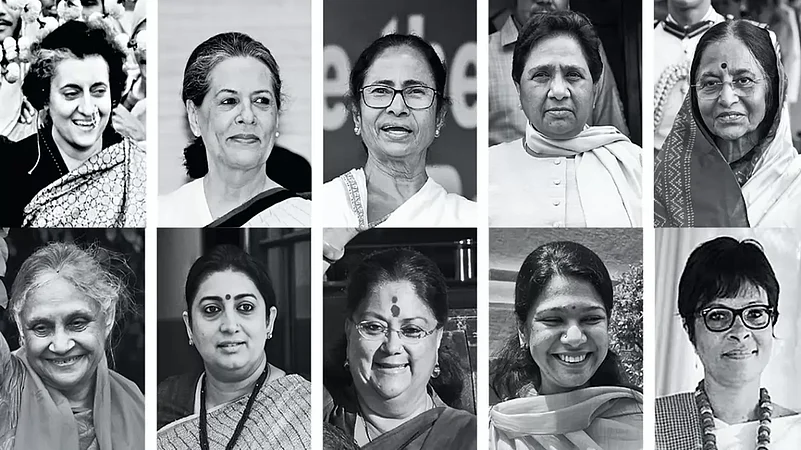Nidhi Sharma has done yeoman service to politics, Parliament and the women’s cause through this excellent collection of profiles of Indian women leaders from Indira Gandhi through three groups she labels ‘The Inheritors’ (Sonia Gandhi, Mayawati and three others); ‘The Lone Warriors’ (former President Pratibha Patil, Mamata Banerjee and three others); and ‘The Future Leaders’ (Smriti Irani, Kanimozhi, Ampareen Lyngdoh and two others). It is uplifting to travel through the packed lives of struggle and achievement of each of these women from the north-east corner of the country to the deep south, from the Hindi heartland to the east, west and southern reaches, to take the measure of the extent and current limitations of the women who have made it to the top or got near the summit, overcoming daunting obstacles and demonstrating grit, persistence and patience, as the times and circumstances demand. It is also impressive to see the way the author handles with ease contexts and place names ranging from Meghalaya to Tamil Nadu. Here, one feels, is an author who knows her subject.
Did you know, for instance, that J Jayalalithaa spent her childhood “pining for her mother” who was often away for days and tying her mother’s sari around her hand when she slept to keep loneliness and longing at bay? Or that she won the prize for the ‘Best Outstanding Student’ from Church Park School? We learn that Vasundhara Raje Scindia started school at the Presentation Convent, Kodaikanal, and of the under-the-belt assault on her reputation by a political opponent “insinuating that the woman chief minister enjoys an evening drink” by saying that she was never available after 8 pm. We also learn that Sheila Dikshit was advised not to move into a Lutyen’s building as chief minister because of a “pilkhan tree which was home to hundreds of fruit bats hanging upside down”—as bats were considered a bad omen, a superstition she brushed aside. There is also a moving portrait of Ampareen Lyngdoh who had her third child just before the election campaign began. “You won’t believe how crazy that campaign was. I was running between home and the campaign—feeding her and going back to the campaign”.

I had no idea that Thoothukudi, the constituency Kanimozhi chose over several available safe DMK seats, was an AIADMK stronghold. Nor that Kavitha Kalvakuntla, like Bal Gangadhar Tilak with Ganpati Bappa Morya, converted the Bathukamma festival of Telengana into a political platform for mobilising one crore supporters. Or that Mamata Banerjee’s father, whom she adored, was a “government contractor in the construction business”. Indeed, one discovered that even as she organised Chhatra Parishads in Kolkata’s campuses to take on the formidable CPI (M)-related Democratic Students Organisation, “she would carry books with her, get arrested, and prepare for examinations in the lock-up”.
These vignettes are succeeded by succinct accounts of how they climbed and clambered their way up the greasy pole of politics, never letting their gender become a handicap. At the end, one finds one has learned a great deal not just about women in politics but the nature of challenges in politics per se. At some inflexion point in their careers, women, at least successful women, become politicians rather than women politicians.
That said, I have to enter a couple of caveats. First, these profiles are left hanging because there is little analysis or hypotheses of why so few women make it to the legislatures, the theme of the lively launch of this book at Constitution Club. Second, the focus of the book being on ‘leaders’, there is little or no reference to women subalterns one sees at the barricades, braving lathi charges or gladly going to jail. Nor do they figure in the book, singing and dancing in celebration of party victories or stuffing each other’s mouths with sweetmeats, in which morale-boosting capacity they are as vital to a party’s performance as the leaders they follow. Women leaders, like male leaders, reap the reward for their endeavours while these women never get a piece of the cake, yet, turn out day and night at the party’s call, and often get a thrashing from the police for their pains. Subaltern they may be, but they are leaders too in their own right. Indeed, their struggle is far more exacting than their sisters who lead—and should, therefore, have merited a profile or two.
Even though the author describes Indira Gandhi and Sucheta Kriplani as ‘The Pioneers’, the fact is that the true pioneers were Annie Besant and Sarojini Naidu. Their absence from the book would be keenly felt by readers. My final crib is that although the author quotes me on women in Panchayati Raj, she has not included any of the 14 lakh women, of whom one lakh are officeholders, some for successive terms, although it is at that level, particularly among poor Dalit women and tribals, that the women leaders of the present and the future are being nurtured. Profiles of even one or two of these women—and I would have been delighted to help Nidhi Sharma find them—would have given the work a valuable additional dimension.
But caveats aside, She, The Leader is as good a place as any to start a study of the growing space for women leaders in our democratic system, especially where it matters most—at the grassroots.
(Views expressed are personal)
Mani Shankar Aiyar is a diplomat-turned-politician and former Union minister
















